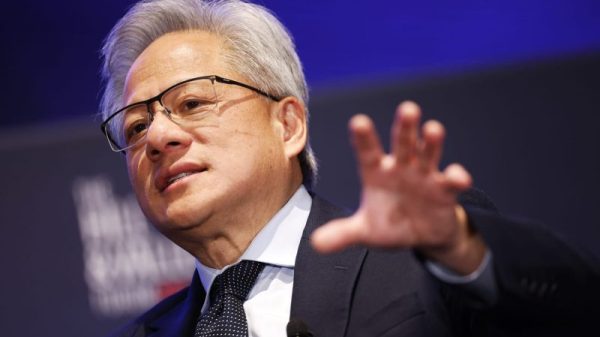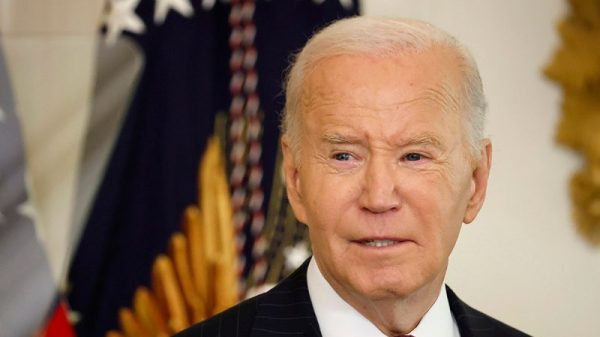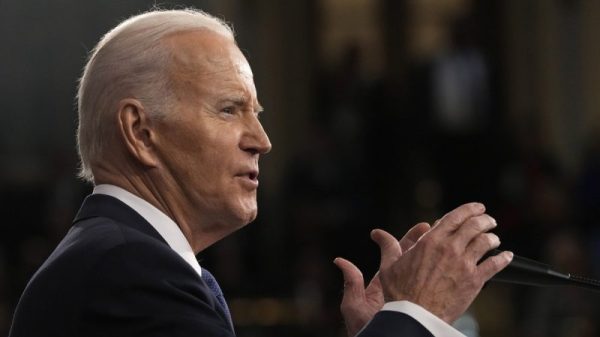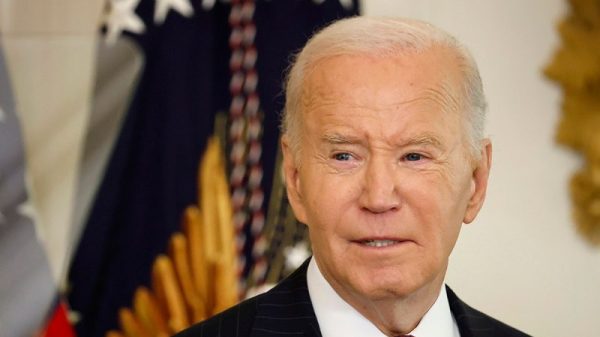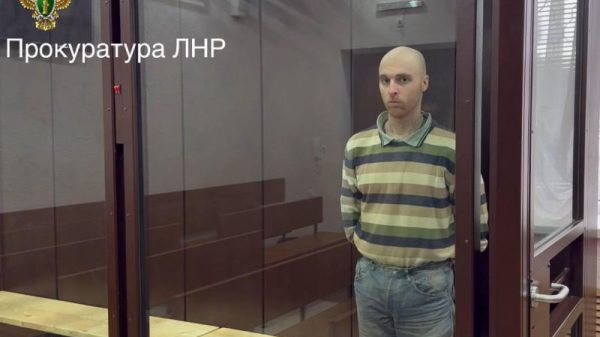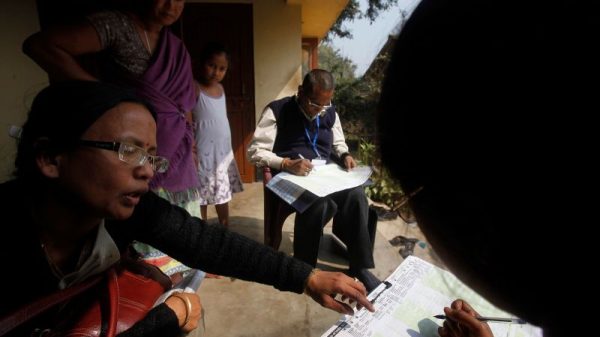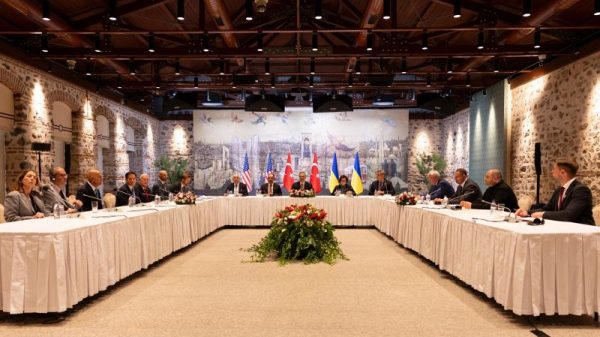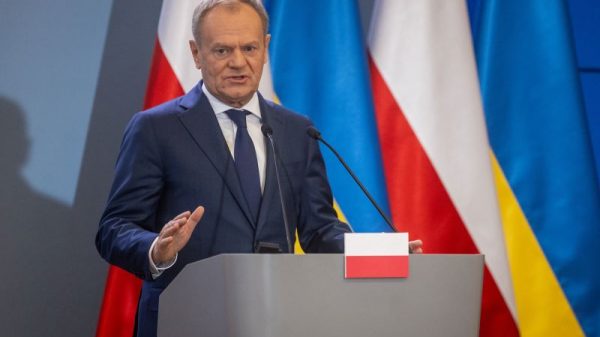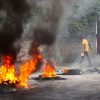A swarm of Ukrainian jet skis races across the ocean under pitch black skies, visible only from the infra-red camera of a drone watching from above. They slow down as they approach the shore to avoid detection and hurry onto dry land.
That soldier was call-sign “Muzykant,” meaning “the musician” in English. He was a violinist who became a soldier with Ukraine’s special forces. Muzykant is the squad leader of the Bratstvo battalion which, along with Ukraine’s defense intelligence and other units, carried out the infiltration into Crimea earlier this month.
That amphibious operation, early in October, was an infiltration by Ukraine’s special forces into Russia’s biggest stronghold in occupied Ukraine, part of a recent trend that has seen Kyiv increase its attacks on the peninsula. The exact date and time of the attack have not been disclosed.
Muzykant was one of 10 Bratstvo battalion soldiers involved in the night assault on Crimea, in cooperation with other Ukrainian units – the total number of operatives is still unknown. They sailed through rough seas on larger speedboats, before switching to lower profile jet skis when they were in range of the peninsula. They then raced towards the shore, destroyed Russian military equipment placed by the sea and headed back, all in a matter of hours.
The objective was not just to sabotage some of the military equipment Moscow keeps close to the shore, but also to convey a message to Ukrainian citizens in the territory.
“We did it so that people in Ukraine and in occupied Crimea don’t lose spirit and keep faith in Crimea returning to Ukraine,” Muzykant said. Russian forces illegally annexed Crimea in 2014. The peninsula holds a deep symbolic importance to Russian President Vladimir Putin and it’s a strategically vital logistics hub for the Kremlin’s war effort.
Muzykant said the dangerous operation took months of planning to prepare the Ukrainian soldiers for the many risks they would face.
“While we were landing the sea was stormy, the waves were up to 2 meters (6.6 feet) high,” he explained. “Plus the Russian warships were patrolling the sea, the Raptors. There were four of them, each with a crew of 20 Russian soldiers armed with heavy machine guns and a 30-millimeter gun.”
But the Bratstvo battalion was able to navigate those dangers. They reached the peninsula and executed their mission.
“We trained a lot for this mission. Everybody knew their role, what they were supposed to do on the shore,” Muzykant explained. “On the way back after the task the Russian warships were chasing us, but we managed to escape.”
None of the Bratstvo battalion soldiers was injured or captured, but Ukrainian defense intelligence acknowledged losses, although did not provide further details. It also said casualties on Moscow’s side were much more significant.
Moscow said it had captured one of the Ukrainian soldiers that landed in Crimea, releasing videos of his interrogation on national television, but it refused to elaborate on any losses on the Russian side.
Capture, injury or death are all risks Muzykant is prepared to take for missions he believes are necessary.
“It’s not just moral support to our people in Crimea, but also help to our forces in the trenches,” he said. “We divert the enemy’s attention towards us, and the enemy is forced to relocate their personnel and vehicles to (the) Crimean seaside.”
The Crimean front
October’s assault was one of many that Ukrainian forces have carried out on the peninsula in recent months.
In September, strikes hit the headquarters of Russia’s Black Sea Fleet in the Crimean city of Sevastopol. The missiles used were seemingly the long-range UK-donated Storm Shadow.
Ukraine has also struck the Kerch bridge linking Crimea to mainland Russia multiple times.
Kyiv’s forces damaged a Russian ship and a submarine when it struck one of the dry docks used by the Black Sea Fleet on September 13, and Ukraine has carried out multiple attacks on the Saki air base, from where Russia launches some of its attack aircraft.
Russia has promised retaliation on several occasions, calling the attacks “acts of terrorism,” but Ukraine has continued to carry out strikes on the peninsula. In addition to drones and missiles, it’s long been speculated that Kyiv’s special forces were operating in Crimea, but their profile was raised with the amphibious October raid.
One of the Bratstvo unit’s founders and a key planner behind the surgical strike, Dmytro Korchynskyi, said attacking the peninsula was key for Ukraine’s counteroffensive effort.
“Crimea is a military base they (Russia) still consider to be well defended. So for us it’s vital,” Korchynskyi explained. “And also it’s vital from the military-political point of view. We can’t let anybody forget Crimea is Ukrainian and we will always operate there.”
“We are fighting a trench war on the front lines and success there is not always obvious – special operations of this kind in the rear or on the sea, inspire and give (our soldiers) energy to keep fighting,” he added.
And while striking Russian assets with drones and missiles is important, he believes having Ukrainian soldiers on the ground distracts Moscow and forces Russia to relocate assets.
“Every soldier that is guarding the beach is one that is not present at the Zaporizhzhia front,” he said.
Those operations behind enemy lines, deep into Russian controlled territory, are reliant on support from the local population, Korchynskyi said.
Monitoring military facilities
Ukrainians living under Russian occupation have long been organizing themselves into resistance groups, locally referred to as Partisans. They have been active across occupied Ukraine, most notably in Kherson and Melitopol, but also Crimea.
Atesh also refused to comment on whether they were involved in the September strike on the headquarters of the Black Sea fleet in Sevastopol, but said they keep constant tabs on the Russian military and communicate any movements to the Ukrainians.
Their work, the group said, is important yet extremely dangerous and members are actively sought by Russian authorities, including the Federal Security Service (FSB).
“They use various means of wiretapping the area (apartments, cafes or any other premises) and also (make) attempts to introduce FSB agents into our movement,” Atesh said. “Attempts by the Russians to infiltrate our ranks are constant, but our team skilfully finds them. In addition, we have very strict filtering of potential agents and most agents operate autonomously to prevent information leakage.”
“Agents of our movement understand all the risks and strictly follow safety measures,” they added.
Ready for liberation
The Partisans say they are only able to effectively fulfill their missions because they enjoy “the broad support of local residents,” and claim these coordinated attacks from the air and the sea are boosting their ranks.
“Our movement and other resistance movements are only getting bigger and stronger,” they said “The occupiers know this very well. The pro-Ukrainian residents of Crimea are ready for the liberation of the peninsula.”
Korchynskyi said that liberation is the ultimate goal of these raids, and Ukrainian forces have been slowly perfecting them, especially amphibious tactics.
Muzykant knows there’s still some time and plenty of hard work before Ukrainian forces are able to launch a bigger offensive on Crimea but more – and more daring – raids are on the horizon.
“We weaken them by destroying their military equipment and personnel but they become more attentive,” he explained. “They become better. So every next task is harder.”
Ultimately, he says he’s driven by the belief Ukrainians in Crimea are waiting for them.
“They are waiting for our sign to start the fight against the Russian aggression,” he explained.
The very early stages of that fight may already be unfolding.







